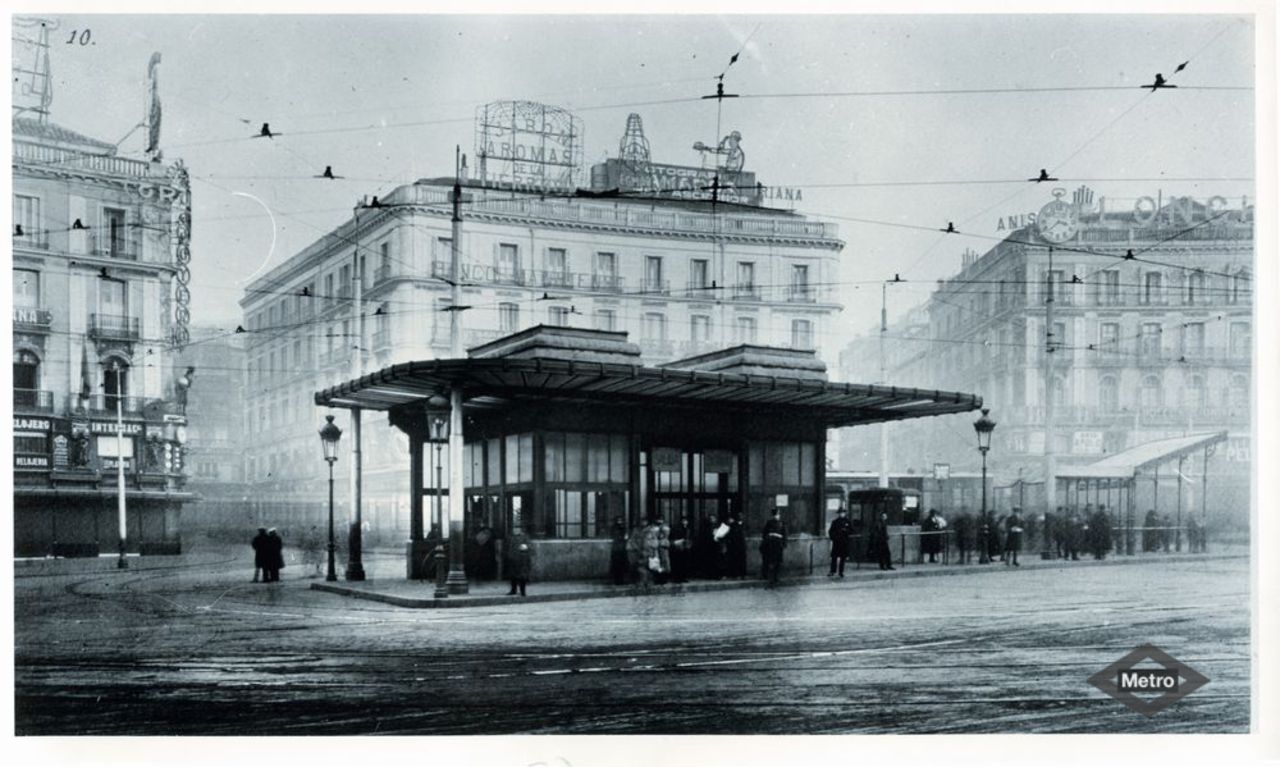ALBERTO HERNÁNDEZ
@albertohv_
Wednesday, October 16, 2019 - 02:05
- Share on Facebook
- Share on Twitter
- Send by email
It is first thing in the afternoon, 15.40, when the train starts at the Cuatro Caminos station. On that October 17, 1919, with the premiere of the first underground electric railway line, Madrid climbs into a mode of transport that had already proven its effectiveness in other major cities such as London, Paris, Berlin or New York.
The inaugural trip transports a delegation headed by King Alfonso XIII and is destined for the Puerta del Sol (four kilometers). However, the opening to the public does not occur until October 31, and the expectation is such that long queues are formed that make it possible to enable only the Sol and Cuatro Caminos stations for a few days until the locals got used to the new medium Of transport.
Madrid is in 1919 a city of more than 600,000 inhabitants that does not stop growing. The urban center lacks large arteries (the Gran Vía is only open between Alcalá and Montera) and the Puerta del Sol, already enlarged in 1862, is crowded. There a network of slow trams is centralized that do what they can with paths full of violent curves and narrow, steep streets. The bourgeoisie is accommodated on the outskirts, in the neighborhoods of the extensions, while the working classes nurture the outlying neighborhoods located beyond. In this context, the engineer Miguel Otamendi projects an underground railway that connects Puerta del Sol with the core of Cuatro Caminos, which at the moment is made up of a handful of streets halfway between a still half-empty Chamberí and Tetuán de las Victorias. Its objective is to provide the city with a fast, economical and regular mode of transport.
The works of the first section of the north-south line begin on July 17, 1917 and a duration of two years and three months is agreed. “Making a tunnel of Cuatro Caminos a Sol helped by spikes and shovels and animals to load all the material that was being removed did not have to be easy,” says Javier Otamendi, nephew of the creator of the Metro and who has worked in the suburban since 1972 to the present.
The growth was fast. In 1923 the first line has already been extended to the Vallecas Bridge and a year later the second line is inaugurated, linking the Puerta del Sol with the new Salamanca and Sales neighborhoods.
Since then, evolution is known to all. The tentacles of the network have multiplied in these 100 years of life to reach 289 kilometers (light meter apart), length similar to the distance between Madrid and Cáceres. The subway today reaches 12 municipalities and absorbs more than 40% of the demand for public transport in the Community of Madrid, with 657 million passengers in 2018. «With its almost 300 kilometers to start it every day is a great effort to the thousands of workers who have worked there. The merit is yours, to be the architects of which has not stopped working even one day in these one hundred years, ”says Otamendi.
Despite the years, Sol (lines 1, 2, 3 and Cercanías) remains the busiest station in the entire network, with almost 71 million uses last year. The stations farthest from the center of Madrid tend to record the lowest numbers of travelers. Hospital del Henares, located in Coslada and head of line 7, is the least frequented of the entire network, with only 405,334 passengers in 2017.
THE EVOLUTION OF THE MOBILE PARK
The first cars that enter circulation in 1919 are the so-called Cuatro Caminos, built in Zaragoza by Carde and Escoriaza (currently absorbed by CAF). These trains remained in circulation for 70 years, although they were renovated in the late 50s and early 60s. Until 1945 up to six more models of classic cars, all of narrow gauge, which are installed on the lines are introduced older (1, 2, 3, 4, 5 and Branch).
In 1984, 2,000 cars were introduced, the first calls to replace classic cars. These vehicles can still be seen on lines 1 and 5, although before they circulated on all the narrow gauge lines, including the old 8 (Fuencarral-Avenida de América), the 10 before its remodeling or the 11 in its early years. In 2006 another relay would be carried out on lines 2, 3, 4 and Ramal with the acquisition of 3,000 cars.
In 1974, the first section of line 7 (Avenida de América-Las Musas) was inaugurated, the first of the wide gauge network, which allows for more spacious and comfortable interiors. For her, the first 5,000 cars are acquired, a model that can still be seen on lines 6 and 9 (copies from 1982 onwards). As of 2002, models 7,000, 8,000 and 9,000 are gradually introduced to serve lines 6, 7, 8, 9, 10, 11 and 12.
According to the criteria of The Trust Project
Know more- Metro of Madrid
- Madrid
- Graphics
City Hall10 fines a day for urinating on the street
Data Theft and theft soar 40% in Barcelona
Autumn Fair Paco Ureña returns to Madrid

